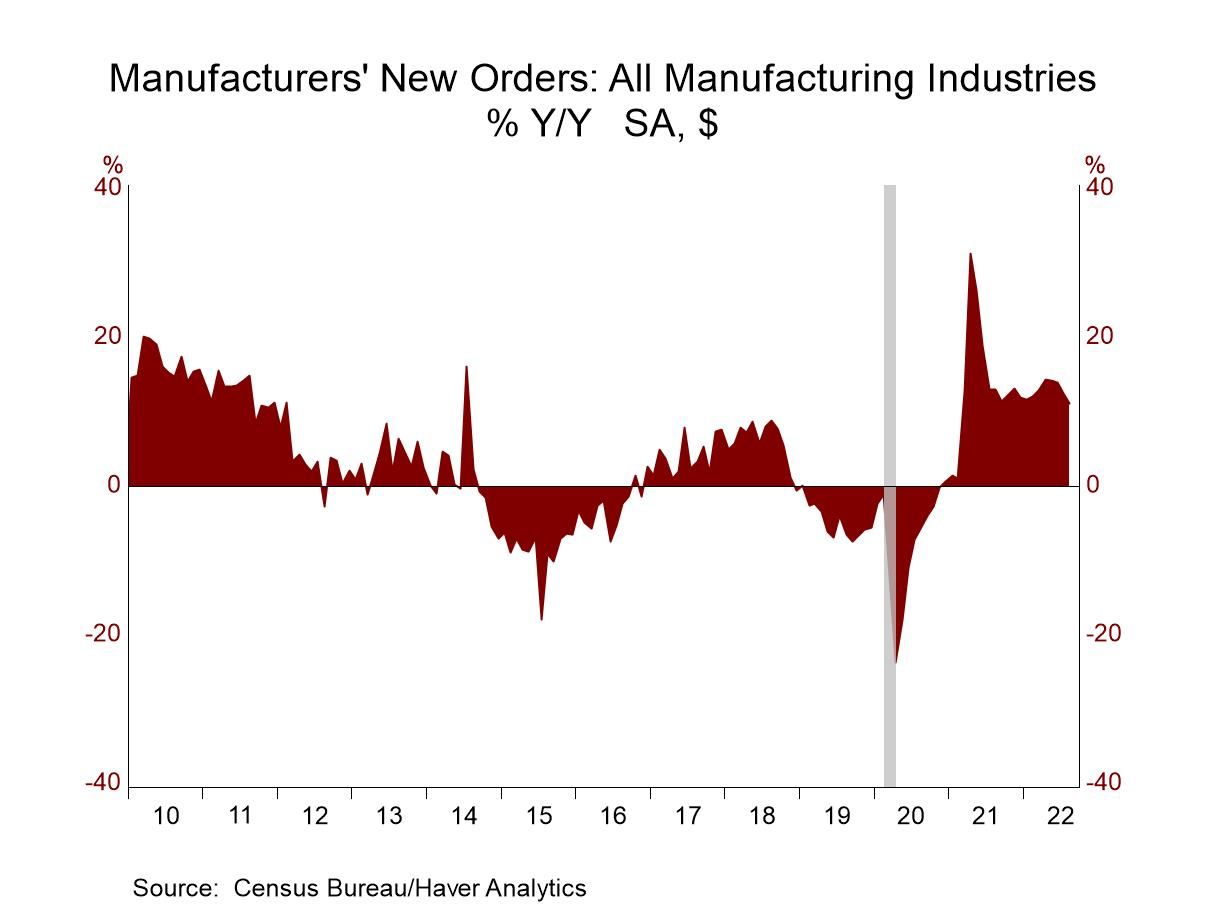Trends for the volume of retail sales in the European Monetary Area continue to slip. Sales have fallen month-to-month for three months running and in four of the last five months. However, the amount of the decline has been decelerating with June sales falling 1%, July sales falling 0.4%, and sales in August falling by 0.3%.
Sequential sales show the opposite pattern, with the rate of decline getting progressively larger. Year-on-year volumes fall by 1.8%; that pace steps up to a pace of -3.3% over six months annualized, and again to -6.1% over three months.
Food & beverage sales fall in each of the last three months and the decline gets progressively larger. They also fall sequentially over the three horizons with a tendency for declines to get larger. Sales weaken from their -2% pace over 12 months to an annualized pace of -5.3% over six months and to a pace of -4.4% over three months.
Quarter-to-date (QTD) sales volumes with two of three-month’s data in hand are falling at a 5.2% annualized rate with food & beverage purchases falling at a similar 4.5% annual rate.
The exception to the trend of weakening sales is from vehicle sales where sales rise strongly by 19.2% month-to-month in August and log progressive growth rates that rise 6.4% over 12 months then rocket to a gain of 26.6% annualized over six months and further to 118.4% annualized over three months!
The chart at the top presents the ex-auto sales volume figures and the auto registration figures plotted on a two-scale chart as levels in both cases. Because growth has been so subdued this is an effective way to see sales trends and to compare vehicle sales with other retail volume trends especially given the impact of Covid over this period. Percentage change data would be harder to explain.
The chart shows the clear mutual drop in sales during the Covid period, followed by a rebound that was extended for non-vehicle sales volumes, a rebound that continued to elevate sales to new highs post-Covid. Vehicle registrations, however, never made such a recovery. They failed to reach pre-Covid sales levels and have instead continued to drop, in part, because of supply chain issues as well as demand issues.
The current strong gain in vehicle registrations still leaves them well short of the recovery nonvehicle retail sales have experienced. While total retail sales are up by 2.6% compared to their January 2000 level and food & beverage sales are up by 0.4%, vehicle registrations are still lower on balance by 16.9%. Of course, over this stretch of time, none of these sales figures is very impressive. Europe has continued to limp ahead in the wake of Covid, now threatened with energy supply problems with winter coming, with war on its doorstep and high inflation.
EMU and other country retail trends In the EMU and the rest of Europe, individual countries are experiencing sales declines broadly. All countries in the table show declines over three months. Six of eight countries show declines over six months. Six of eight countries show declines over 12 months; one of the two countries where sales don’t decline logs a change that rounds to zero. Portugal shows sales volumes increase over 12 months and six months with a decline at a 2.2% annual rate over three months. Belgium shows an increase in sales values over six months flanked by a 12-month decline of 2% and a three-month drop at a 1.5% annual rate. These are references to the only sales increases over the 24 sequential calculations (eight countries over three horizons each). Over three months, sales decelerate everywhere except for the Netherlands and in the U.K. Five of eight countries show deceleration over six months compared to 12 months. The exceptions are Denmark, Belgium, and Norway.
Over the quarter-to-date, sales are falling in all countries except Portugal where there is a 3.2% annualized gain. Five of eight countries show sales have increased on balance since January 2020 before Covid struck. The exceptions are Spain, The Netherlands, and the U.K.








 Global
Global
